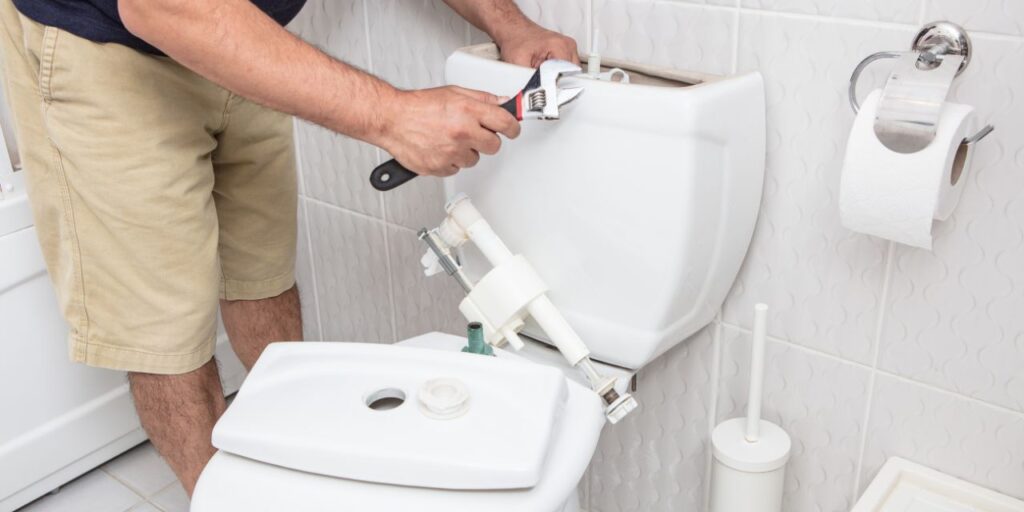When it comes to maintaining a well-functioning plumbing system, upgrading your cistern might not always be top of mind. Yet, it’s a crucial component that can significantly impact your home’s efficiency and water management. Whether you’re facing issues with an aging cistern or looking to enhance your current setup, understanding the ins and outs of cistern repairs and installations can save you time, money, and hassle.
Understanding Your Cistern
A cistern is a crucial component in many households, serving as a reservoir or tank to store water for various uses, such as flushing toilets, collecting rainwater, or other essential needs. These tanks are designed to be durable, but over time, they can wear out due to constant use, accumulation of sediment, or natural aging processes. This wear and tear can lead to inefficiencies and frequent maintenance issues.
Upgrading or repairing your cistern can offer numerous benefits, including improved water efficiency, reduced risk of leaks, and enhanced overall system performance. A modern, well-maintained cistern not only ensures reliable water supply but also helps in conserving resources and minimizing water wastage, contributing to a more efficient and eco-friendly home.

When to Consider an Upgrade
Several signs indicate it might be time to upgrade your cistern:
Frequent Leaks
If your cistern frequently leaks or drips, it can result in wasted water and increased utility bills. Persistent leaks often signal that the cistern’s components are aging or have worn out. Addressing these leaks promptly can help prevent further damage and avoid unnecessary expenses.
Inefficiency
Older cisterns might not be as efficient as modern models, leading to higher water consumption and increased costs. Upgrading to a newer cistern can significantly improve water conservation, reducing your utility bills and environmental impact. New models are designed with enhanced efficiency features that make a noticeable difference in performance.
Outdated Technology
Modern cisterns come equipped with advanced features such as dual-flush mechanisms, which allow you to choose between a full or partial flush. This technology can lead to substantial water savings compared to older models. Upgrading can help you benefit from these advancements and reduce overall water usage.
Frequent Repairs
If you often find yourself calling a plumber to address issues with your cistern, it might be more cost-effective to consider an upgrade. Frequent repairs can add up, and a new cistern might offer improved reliability and fewer maintenance problems, ultimately saving you time and money.
Choosing the Right Cistern for Your Home
When upgrading your cistern, selecting the right model for your home is crucial. Here are some factors to consider:
Size and Capacity
When upgrading your cistern, selecting the right size and capacity is essential. For households with high water usage or larger families, a bigger cistern ensures an adequate and reliable water supply. A well-sized cistern can help manage water demands effectively and prevent issues related to insufficient water availability.
Type of Cistern
Choosing the right type of cistern is crucial. Gravity-fed cisterns are simple and rely on gravity but can be bulky. Pressure-assisted cisterns use air pressure for efficient water movement but are more complex. Dual-flush cisterns offer water-saving options with full and half flush settings, enhancing water conservation.
Material
Cisterns come in various materials, including plastic, ceramic, and metal. Each material has its benefits: plastic is lightweight and durable, ceramic is traditional and easy to clean, while metal offers robustness. Consider factors like durability, ease of maintenance, and compatibility with your existing plumbing when selecting a material.
Cost
Budget is an important consideration when upgrading your cistern, but investing in a high-quality model can provide long-term savings. A well-chosen cistern can reduce water bills, lower repair costs, and improve overall efficiency, making it a cost-effective investment in the long run.
Preparing for Installation
Before installing a new cistern, proper preparation can make the process smoother:
Assess the Existing System
Begin by evaluating your current cistern setup to identify any necessary changes. Inspect the plumbing connections, assess the space where the new cistern will be installed, and ensure compatibility with existing fixtures. Proper assessment helps in choosing a suitable replacement and avoids installation issues.
Gather Necessary Tools and Materials
Depending on whether you’re installing the cistern yourself or hiring a professional, collect all required tools and materials. This may include wrenches, pipe fittings, sealants, and any specific components needed for the new cistern. Having everything on hand ensures a smoother installation process.
Shut Off the Water Supply
Prior to starting the installation, turn off the water supply to the cistern. This step is crucial to prevent leaks or flooding during the replacement process. Ensure that all water lines connected to the cistern are properly shut off and drained before proceeding.
Remove the Old Cistern
When replacing an old cistern, carefully disconnect and remove it from its position. This involves detaching the water lines and removing any mounting hardware. Handle the removal process with care to avoid damage to existing plumbing or fixtures, and prepare the area for the new cistern installation.
Installation Steps
Whether you’re tackling the installation yourself or hiring a plumber, here’s a general overview of the installation process:
Position the New Cistern
Place the new cistern in the intended location, ensuring it is level and correctly aligned with existing plumbing connections. Proper positioning is essential for efficient operation and prevents future issues with leaks or misalignment. Use a level tool to confirm that the cistern sits evenly.
Connect the Water Supply
Attach the water supply lines to the new cistern, choosing between flexible hoses or rigid piping based on the cistern’s design. Ensure all connections are secure and properly tightened to prevent leaks. Check compatibility with existing plumbing to ensure a smooth and effective connection.
Secure the Cistern
Fasten the cistern to the wall or floor according to the manufacturer’s instructions. Make sure it is firmly secured and correctly aligned to avoid any instability or movement. Proper securing prevents issues such as shifting or accidental disconnections in the future.
Test for Leaks
After connecting the water supply, turn it back on and check the cistern for any leaks. Carefully inspect all connections and joints to ensure they are sealed properly. Make any necessary adjustments or tighten fittings to resolve any leaks and ensure a watertight installation.
Finalize the Installation
Install any additional components such as the flush mechanism or cover as specified. Test the cistern thoroughly to confirm that all features are working correctly. Ensure that the system operates smoothly, with no leaks or issues, to complete the installation process successfully.
Benefits of Upgrading Your Cistern
Upgrading your cistern comes with several advantages:
Improved Efficiency
Newer cistern models are engineered to optimize water usage while maintaining excellent performance. They incorporate advanced technology that minimizes water consumption without compromising functionality. This efficiency ensures that each flush uses less water, contributing to better overall water management in your home.
Cost Savings
Modern cisterns are designed with efficiency in mind, which can lead to significant cost savings on your water bills. Their advanced features, such as dual-flush options and reduced water usage, help lower your monthly utility expenses, making them a financially savvy choice in the long term.
Enhanced Functionality
Upgraded cisterns often feature advanced functionalities such as quieter operation, improved flushing mechanisms, and more reliable performance. These enhancements lead to a smoother and more efficient user experience, reducing maintenance needs and ensuring consistent performance over time.
Reduced Environmental Impact
By choosing a modern cistern that uses less water and minimizes leaks, you contribute to environmental conservation. Efficient water use helps conserve valuable resources, and reducing leaks prevents unnecessary waste, making your home more eco-friendly and aligned with sustainable practices.
Conclusion
Upgrading your cistern system through repairs or new installations can significantly enhance the efficiency and functionality of your plumbing setup. A well-maintained cistern ensures reliable water storage and management, reducing the risk of leaks and operational issues. Whether considering a repair to address current problems or a complete installation to improve your system, selecting the right approach is key. EZI Plumbing in Valley Bay, AU, offers expert services to meet your cistern needs with precision and care. For professional advice and high-quality workmanship, reach out to EZI Plumbing at 0448467788. Ensuring your cistern is in top condition will provide lasting benefits and peace of mind for your home’s water management system.

